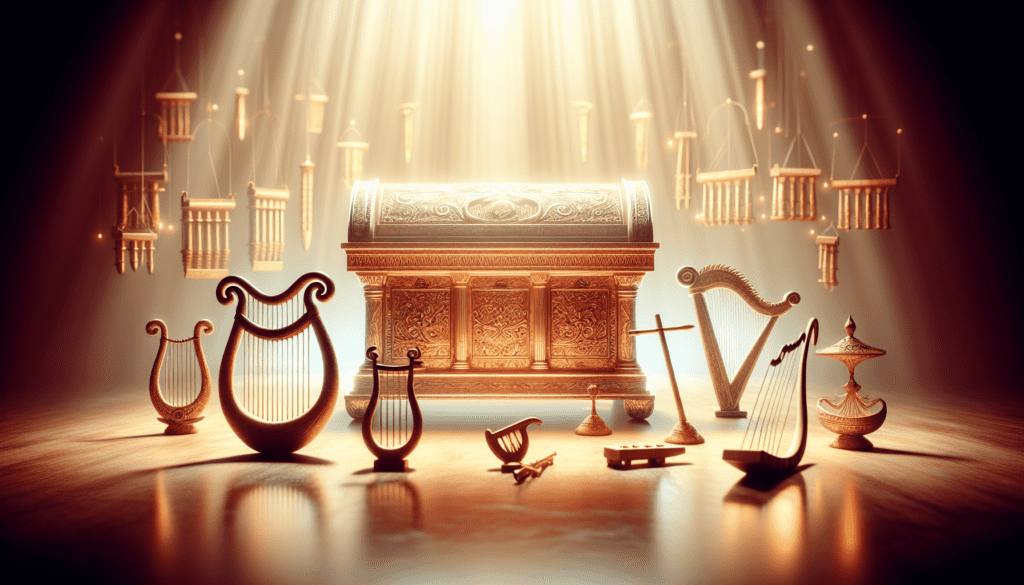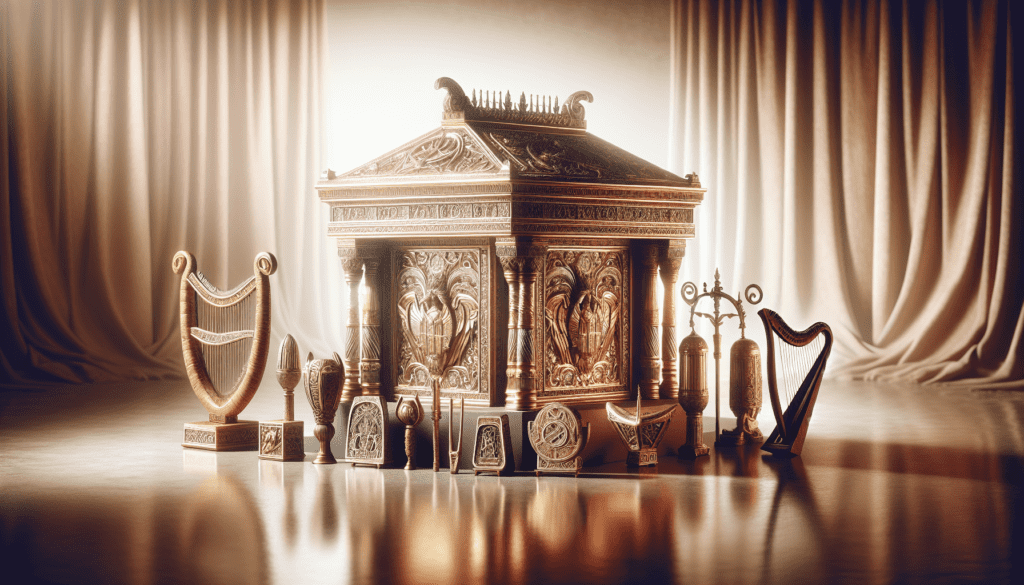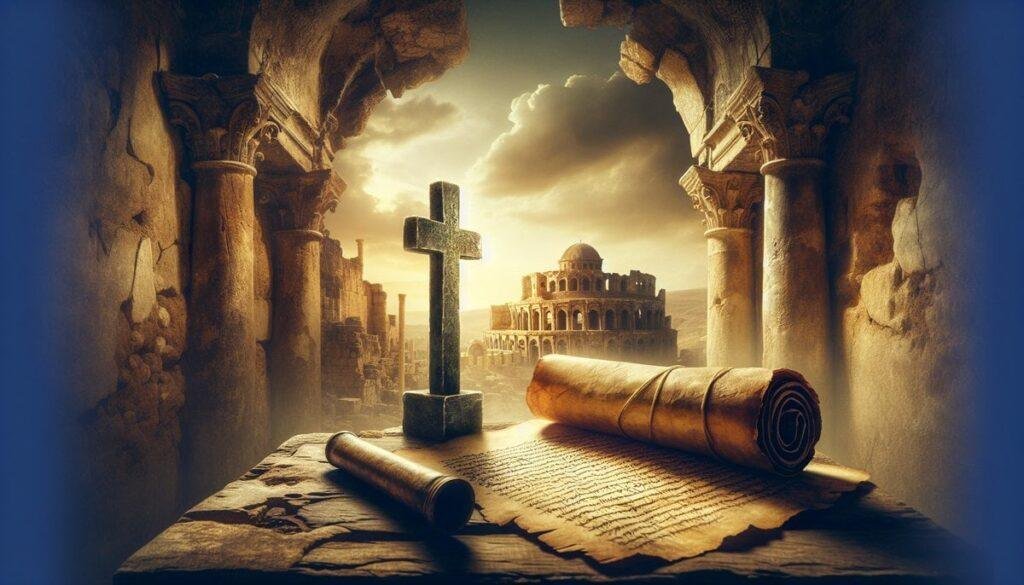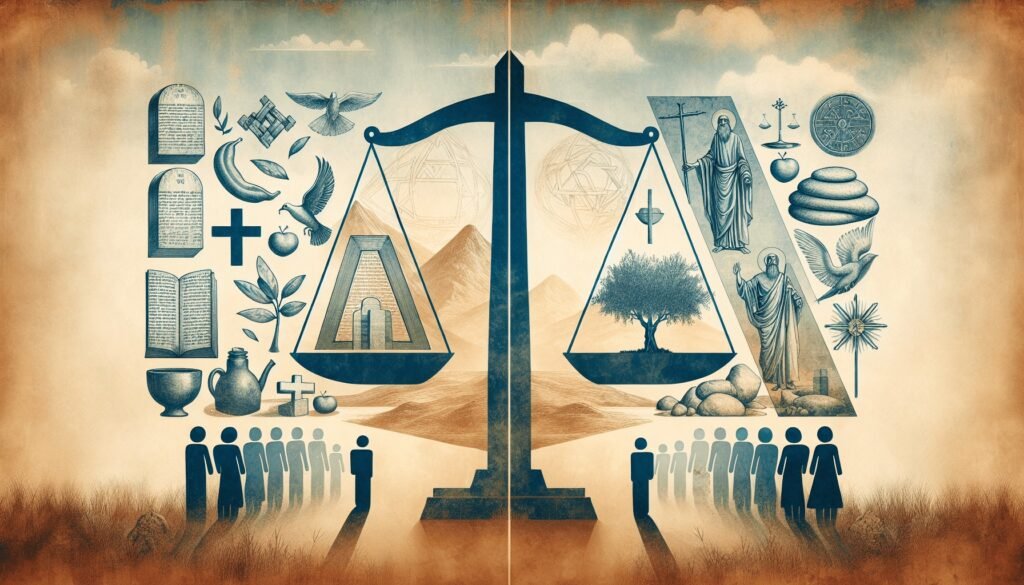What if you could stand among ancient priests, encircling the Ark of the Covenant, listening to the melodic prayers that resonated through the ages? The notion of sacred music, deep-rooted in biblical traditions, evokes a sense of timeless spirituality. High Holy Psalms hold the essence of this experience, blending history, faith, and music into an enduring legacy. Let’s unravel the captivating tapestry of these psalms and their significance in sacred rituals.

The Ark of the Covenant: A Brief Overview
Before we can appreciate the melodic prayers of the priests, it’s essential to understand the Ark of the Covenant. This sacred object is more than just a decorative piece; it symbolizes the divine presence of God among His people.
What Was the Ark?
The Ark was a wooden chest covered in gold, housing the Ten Commandments, Aaron’s rod, and a pot of manna. You might think of it as the original religious artifact, serving as a tangible reminder of the covenant between God and the Israelites.
The Significance of the Ark
Historically, the Ark represented God’s promise and protection. It led the Israelites through the wilderness, journeying with them into the Promised Land. Imagine it at the front of the procession, shining brightly against the desert sands. The melody of the High Holy Psalms echoed alongside it, creating an aura of reverence and awe.
The Role of Priests in Ancient Times
In ancient Israel, priests were the mediators between God and the people. They performed sacrifices, conducted rituals, and offered prayers, including the beautiful High Holy Psalms. Understanding their role sheds light on how worship was organized and expressed.
Priestly Duties and Practices
Priests had a rigorous system of duties, weaving both daily and seasonal rituals into the fabric of communal worship. You could visualize them donning their special vestments, each piece symbolizing different aspects of their sacred duties.
Daily Offerings
- Morning and evening sacrifices
- Incense burning in the holy place
- Psalms and prayers as part of daily routines
Seasonal Festivals
- Passover
- Yom Kippur
- Sukkot
Imagine the hustle and bustle surrounding these festivals, packed with joyous celebrations and solemn remembrances, accompanied by melodic prayers that resonated through the air.
High Holy Psalms: The Heart of Worship
High Holy Psalms are a collection of sacred songs that played a pivotal role in worship. These psalms served as lyrical expressions of joy, sorrow, thanksgiving, and lamentation, offering a unique glimpse into the emotional landscape of the ancient Israelites.
What Are High Holy Psalms?
These psalms are distinguished by their themes of holiness and reverence. They elevate the act of prayer into a melodic experience, transforming the ritual into something profoundly spiritual.
Historical Context of High Holy Psalms
The Book of Psalms, central to biblical scripture, contains numerous references to these sacred songs. Various psalms were likely composed for specific occasions, underscoring their ritual significance.
- Psalm 22: A psalm of lament, expressing deep sorrow.
- Psalm 100: A song of thanksgiving, inviting all to rejoice.
You can almost hear the echoes of these verses as they were chanted around the Ark, bringing a deeper emotional resonance to the worship experience.
The Melodic Nature of Worship
Imagine the scene: priests walking in rhythmic procession around the Ark, their voices rising and falling like waves. The music was not merely an accompaniment; it infused the prayers with a depth of feeling that engaged worshippers on multiple levels.
The Elements of Melodic Prayer
Melodic prayer in this context integrates musical and spiritual elements. You can think of it in terms of rhythm, melody, and harmony, all working together to create a sacred atmosphere.
Rhythm
The rhythmic patterns used in High Holy Psalms created a sense of unity and community. As the priests circled the Ark, their synchronized movements matched the pulsating beats of their prayers.
Melody
Melody adds a layer of emotional expression to the prayers. High Holy Psalms often contain soaring melodies that reflect the worshippers’ joy or sadness, transcending the spoken word.
Harmony
Bringing harmony into the equation allows multiple voices to merge, enriching the prayer experience. The fusion of different vocal parts creates an ethereal quality, drawing the worshippers closer to the divine.

Archaeological Findings Related to High Holy Psalms
Archaeology offers fascinating insights into religious practices surrounding the Ark and the High Holy Psalms. Excavations have revealed artifacts, inscriptions, and ancient texts that shed light on the rituals of ancient Israel.
Significant Discoveries
Several archaeological finds provide a context for understanding worship practices:
The Dead Sea Scrolls: These ancient texts include psalms and other writings that highlight the role of prayer and communal worship.
Temple Remains: Excavations in Jerusalem have uncovered elements of the Second Temple, allowing insights into the architectural context of rituals.
Ancient Inscriptions: Inscriptions mentioning various psalms indicate their significance in public worship.
You might consider how these findings connect modern worship to its ancient roots, revealing a continuous thread of faith and musical tradition.
Theological Significance of High Holy Psalms
Digging deeper into the psalms’ meanings can enhance your understanding of their spiritual dimensions. High Holy Psalms often express profound theological truths, exploring themes such as grace, mercy, and the nature of God.
Themes Found in High Holy Psalms
Divine Sovereignty: Many psalms affirm God’s ultimate control over the universe.
Human Fragility: Verses often reflect human experiences of suffering and joy, bridging the gap between the divine and the mortal.
Covenantal Relationship: The psalms articulate the covenant between God and His people, emphasizing trust and faithfulness.
These themes still resonate today, inviting modern worshippers to engage with their faith in such authentic ways.
High Holy Psalms in Contemporary Worship
Despite their ancient origins, High Holy Psalms influence contemporary worship. You may find that elements of these sacred prayers manifest in modern church services, spiritual gatherings, and individual practices.
The Evolution of Worship Music
The transition from ancient musical forms to contemporary worship has seen changes in style and delivery. While the melodies have evolved, the essence of worship remains rooted in a deep connection to God.
Integrating the Old with the New
Many worship leaders draw from the foundations of psalmody to create songs that resonate with today’s congregations. The use of melodic prayers fosters a sense of continuity between past and present.
Personal Spiritual Practice
In your personal journey of faith, incorporating the High Holy Psalms into your prayers can enhance your connection with God. Reading or singing these psalms allows you to tap into their spiritual richness, experiencing the timelessness of sacred music.
An Invitation to Engage
Consider pairing ancient psalms with modern worship songs. Engage with the theological themes, allowing the music to elevate your prayer experience. If you’ve never tried praying through song, you might discover a profound way to express your spirituality.
The Cultural Impact of High Holy Psalms
The cultural significance of High Holy Psalms extends far beyond religious rituals. These psalms have shaped literature, art, and musical traditions, marking their influence on broader society.
High Holy Psalms in Literature
Writers throughout history have drawn inspiration from the psalms, weaving their messages into literary works. You might recognize references to psalms in poetry and prose, illustrating their universal themes of faith and struggle.
Artistic Representations
Art has captured the essence of the High Holy Psalms, with many painters depicting scenes of worship around the Ark. These works inspire a visual connection to the sacred practices of ancient Israel.
Music Through the Ages
Musical compositions inspired by the psalms, from classical pieces to contemporary worship music, echo their themes in new sounds. If you listen closely, you may catch phrases or melodies that hearken back to those ancient prayers.
Conclusion: Bridging Ancient Worship and Modern Faith
As we reflect on High Holy Psalms and the priests who circled the Ark of the Covenant, we reveal a rich tapestry of faith that transcends time. These melodic prayers are steeped in history, infusing worship with depth, emotion, and community.
Engaging with High Holy Psalms today allows you to connect with your spiritual heritage while navigating the complexities of modern life. Just as the ancient priests found meaning and connection in their worship, you too can experience the soulful echoes of these timeless prayers.
In essence, High Holy Psalms continue to offer a melodic prayer that resonates with your heart, inviting you to step into a sacred space where faith is both expressed and experienced. As you journey through your own spiritual narrative, remember the profound impact of these ancient melodies that still seek a place in your life today.


